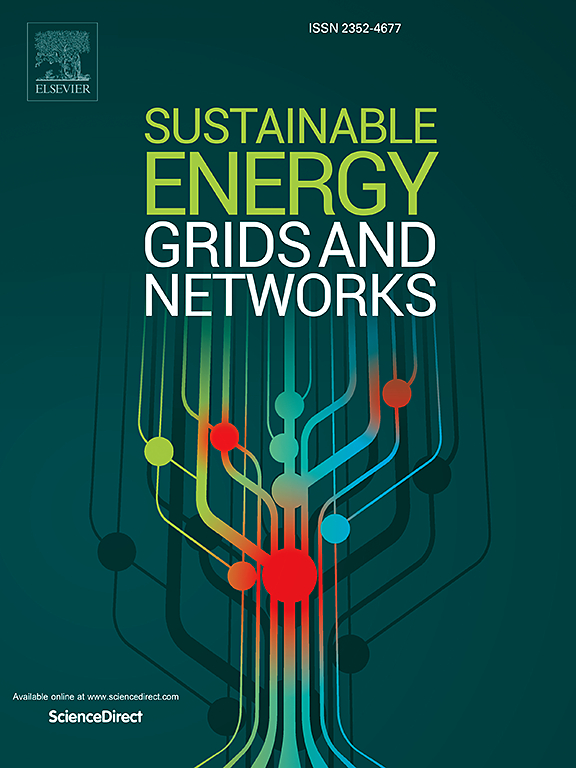How important is fast-charging station modelling in distribution grid planning? Global sensitivity analysis of grid investment model output
IF 4.8
2区 工程技术
Q2 ENERGY & FUELS
引用次数: 0
Abstract
In this article, we address the problem of how to consider load demand from fast-charging stations (FCS) of electric vehicles in distribution grid planning. As the electrification of the transport sector proceeds, connection of charging stations becomes relevant in an increasing number of grid planning cases. However, as many of the inputs and assumptions to distribution grid planning studies are associated with uncertainty, it is not clear how important the modelling of FCSs is for the estimated grid investment costs and the risk of over- and underinvestment in grid capacity. To address this, we apply global sensitivity analysis (GSA) to a grid investment optimization model, which allows us to rank the input factors according to their contribution to the output uncertainty. A voltage-constrained 22 kV distribution grid with expected connection of a FCS is used as case study. The results of the sensitivity analysis show that the uncertainty of the voltage limit planning criterion and the placement of the FCS in the grid, are responsible for most of the output variance of the calculated present value costs of grid investments. This indicates that, to improve grid investment decisions, it is more important to select an appropriate voltage limit and have knowledge about the location of new FCSs, than to improve the estimates of other FCS-related input parameters. In the paper we discuss the use of GSA for guiding data gathering and modelling efforts, leading to improved models and analyses for electric vehicle integration and distribution grid planning.

快速充电站建模在配电网规划中有多重要?电网投资模型输出的全局敏感性分析
本文研究了在配电网规划中如何考虑电动汽车快速充电站的负荷需求问题。随着交通部门电气化的推进,充电站的连接在越来越多的电网规划案例中变得相关。然而,由于配电网规划研究的许多输入和假设都与不确定性有关,目前尚不清楚fcs建模对于估计电网投资成本和电网容量投资过多或不足的风险有多重要。为了解决这个问题,我们将全局敏感性分析(GSA)应用于电网投资优化模型,该模型允许我们根据输入因素对输出不确定性的贡献对输入因素进行排序。以电压受限的22kv配电网为例,对FCS的期望连接进行了研究。灵敏度分析结果表明,限压规划准则的不确定性和FCS在电网中的位置是导致电网投资现值成本计算输出方差的主要原因。这表明,为了改善电网投资决策,选择合适的电压限制和了解新fcs的位置比改进其他fcs相关输入参数的估计更重要。在本文中,我们讨论了使用GSA来指导数据收集和建模工作,从而改进了电动汽车集成和配电网规划的模型和分析。
本文章由计算机程序翻译,如有差异,请以英文原文为准。
求助全文
约1分钟内获得全文
求助全文
来源期刊

Sustainable Energy Grids & Networks
Energy-Energy Engineering and Power Technology
CiteScore
7.90
自引率
13.00%
发文量
206
审稿时长
49 days
期刊介绍:
Sustainable Energy, Grids and Networks (SEGAN)is an international peer-reviewed publication for theoretical and applied research dealing with energy, information grids and power networks, including smart grids from super to micro grid scales. SEGAN welcomes papers describing fundamental advances in mathematical, statistical or computational methods with application to power and energy systems, as well as papers on applications, computation and modeling in the areas of electrical and energy systems with coupled information and communication technologies.
 求助内容:
求助内容: 应助结果提醒方式:
应助结果提醒方式:


